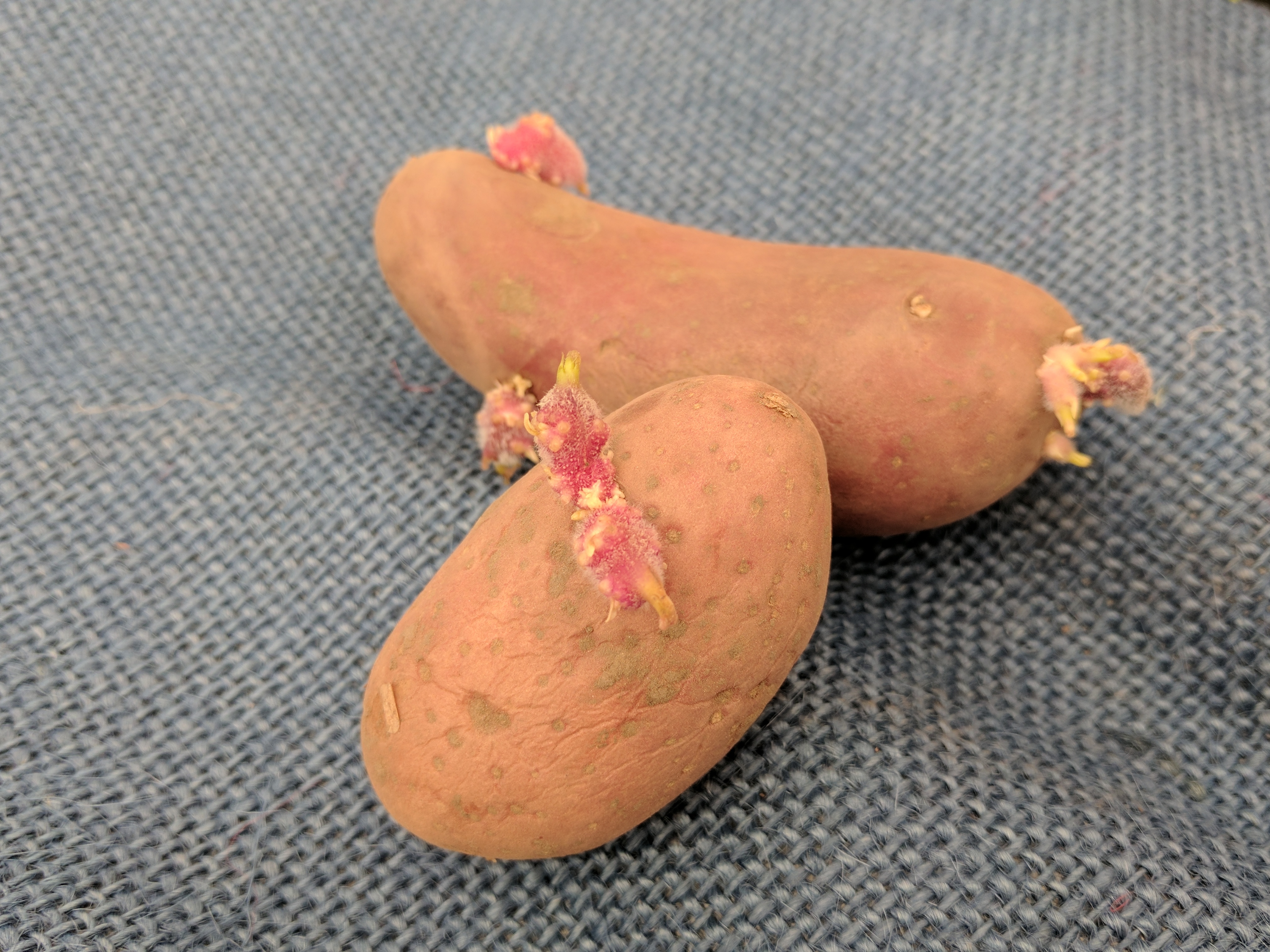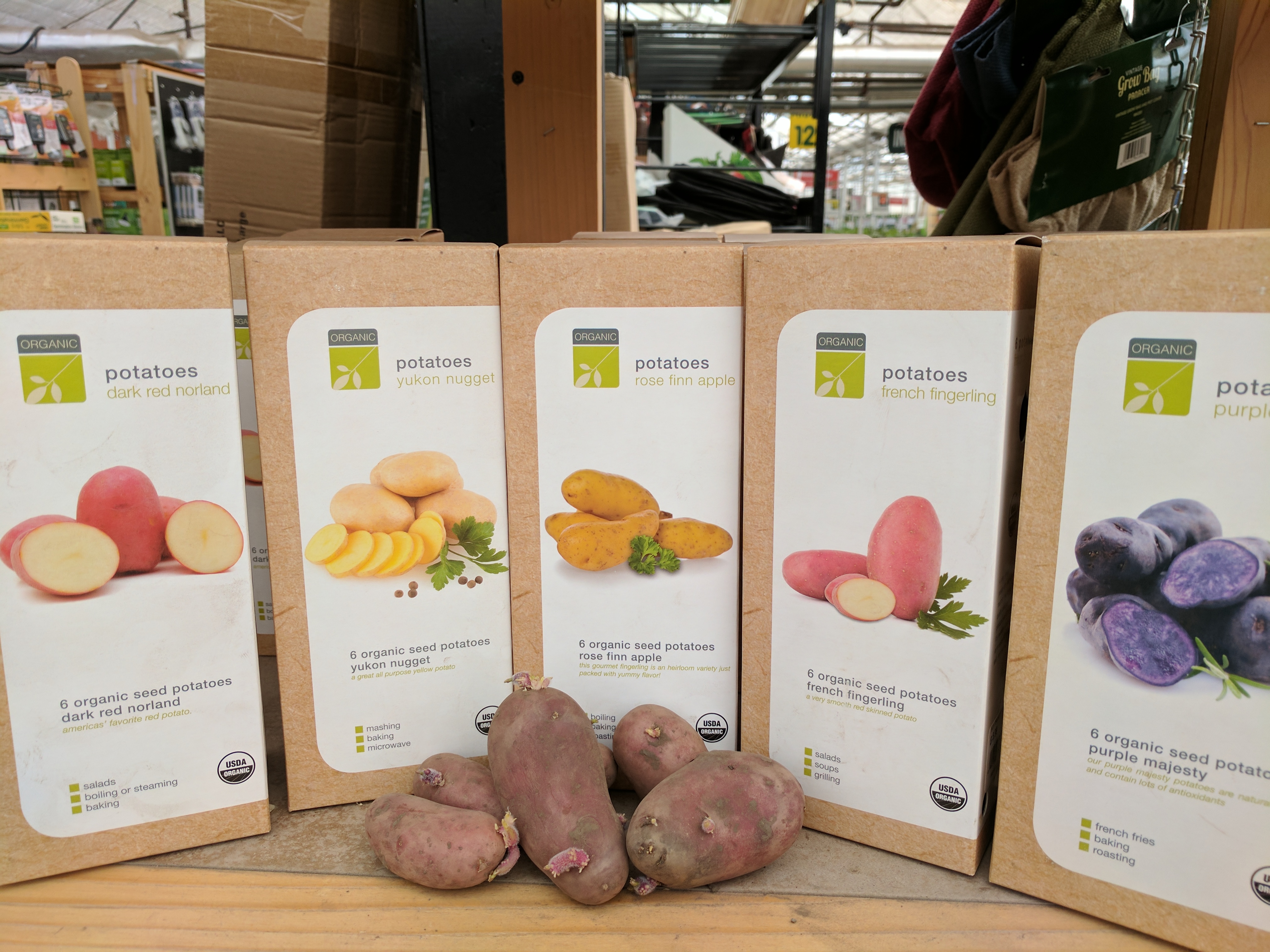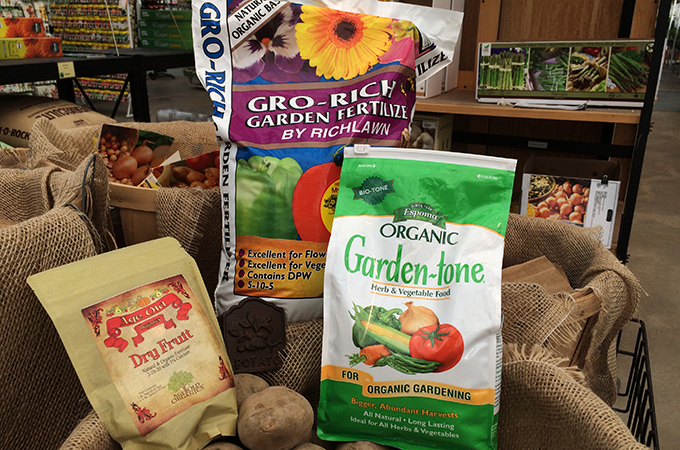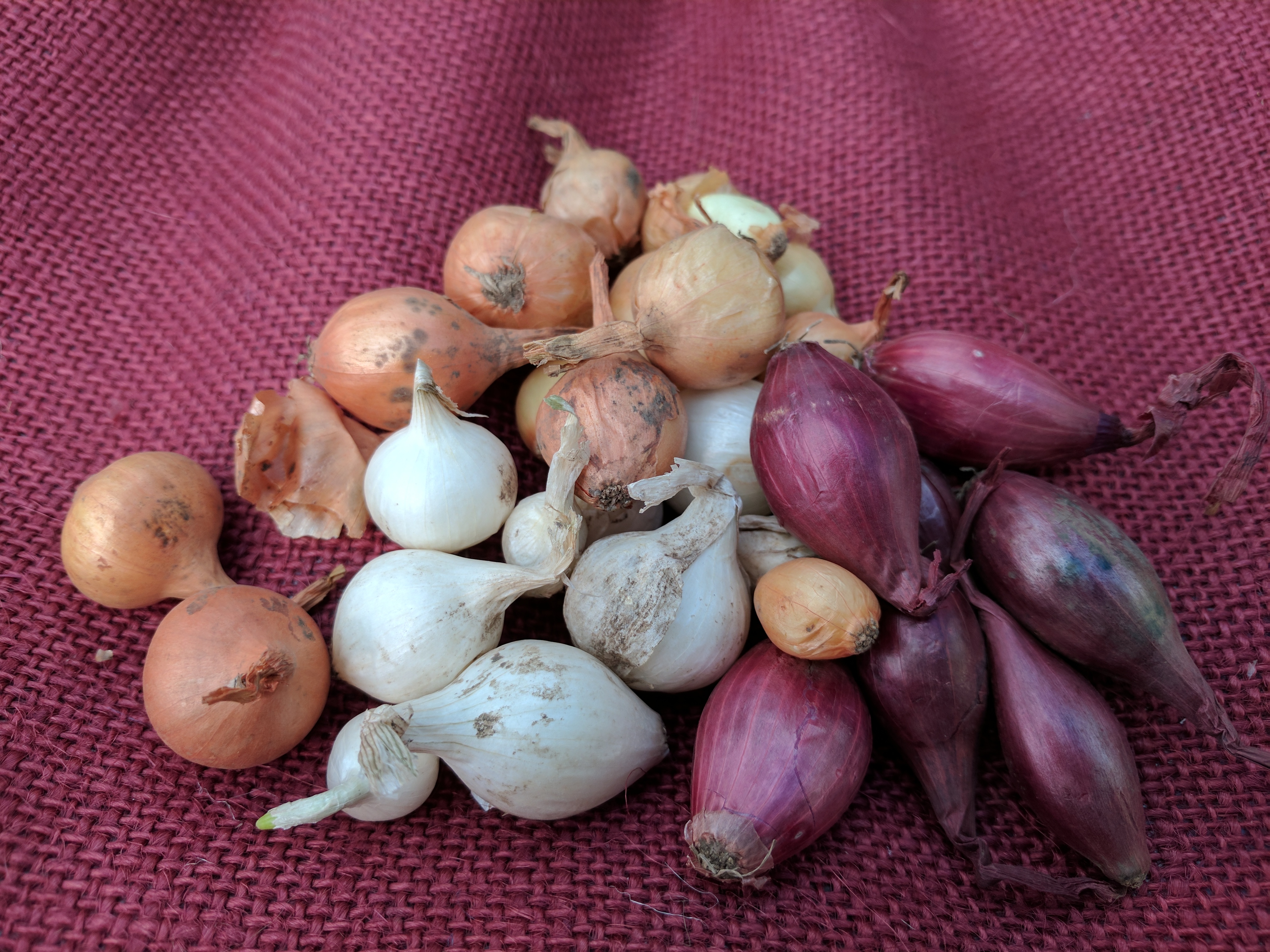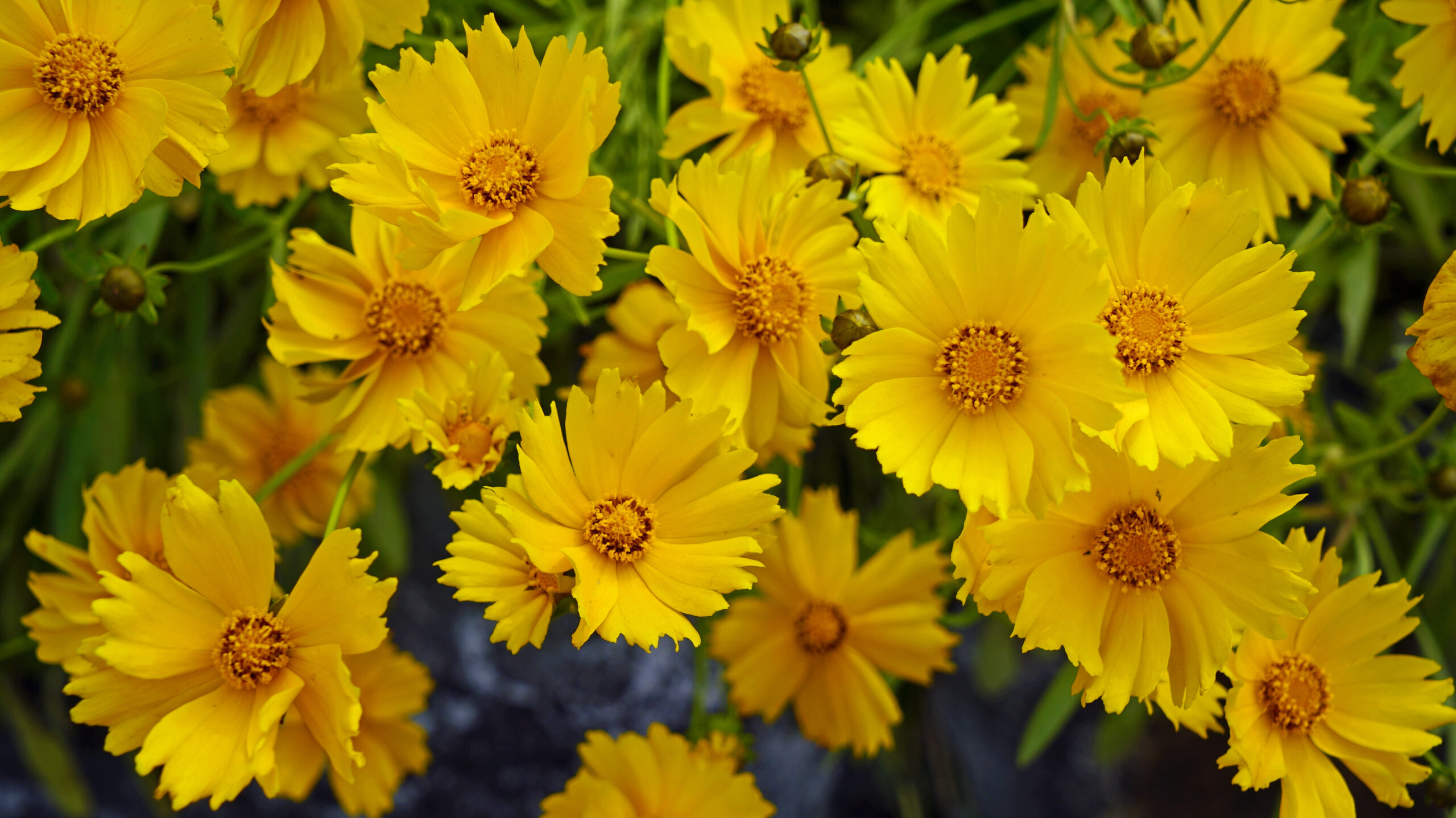Growing your own spuds and onions is easier than you might think.
And now is the time to plant!
If you think you love French fries, wait ‘til you taste fries made from your own home-grown potatoes! Maybe you prefer hash browns…. or tiny new potatoes in cream sauce with parsley… or pan-fried potatoes with roasted red papers and onions! You get the idea. I’m a spud-lovin’ kind of girl. So it’s great that with just a little T.L.C., those beautiful potatoes can be thriving in your garden or mine.
The best time to plant potatoes is at least four along the Front Range is at least four weeks before Mother’s Day, so the timing now is purr-fect!
Tagawa Gardens’ spud department is open for business!
Your potato crop needs to start with “seed” potatoes. These are very young potatoes grown specifically to be used for planting, not eating. Potatoes from the grocery store are routinely treated to prevent sprouting. They’re not what you want in your potato bed.
Tagawa’s bulk seed potato selection includes the always popular, rich and buttery Yukon Gold. We also have Kennebec and Red Pontiac in bulk.
For organic gardeners, Tagawa’s carries a variety of seed potatoes, including Rose Finn Apple, French Fingerling and Purple Majesty.
Seed potatoes about the size of a golf ball are ideal. Larger potatoes can be cut in half. Let the cut ends air dry at least overnight indoors to create a skin… a seal again infection before they’re planted.
Be sure that each “seed” has at least two “eyes” or buds. That’s where the tubers will sprout and send up shoots.
Good soil comes first
Colorado is one of the top potato-producing states in the country. But odds are, the soil in the potato fields of the San Luis Valley in western Colorado has a pretty good head start on our Front Range gardens, so let’s work on that.
Potatoes will rot in soggy, poorly-drained soil. Two to three inches of high-quality compost worked into the potato patch before you plant can make a huge difference. Be sure to locate your potato bed where the plants will get at least six hours of bright sun every day.
Dig a trench about four inches deep. Mix your compost and some well-balanced plant food into the loosened soil at the bottom of the trench.
Tagawa Gardens is proud to offer Nature’s Yield® compost. Popular fertilizers include Espoma® Garden Tone for organic gardeners or Grow Rich® lawn food by Richlawn. The Age Old® Organics line of fertilizers work well as supplements later in the season, too.
Planting and watering
Tuck your seed pieces into the loosened soil at the bottom of the trench, setting them about 18 inches apart in rows two feet apart. The “eyes” should be facing up. Cover them with a few inches of compost-enriched soil and water them well. Take note: Never let your potatoes dry out! They like moisture, but they hate soggy soil. Give them occasional deep soakings. Check the trench after you water until you get the hang of it.
Grow and cover…. cover and grow
As the potato vines emerge, keep gently adding soil over the plants, a few inches at a time, always leaving part of the vine exposed. When the vines have grown taller than the trench, mound one last time, creating a slight hill.
With good sunshine and proper watering, your spuds should be ready to harvest in the fall, about two weeks after the first frost kills their foliage. And then, bring on the hash browns!
Want some onions with those hash browns?
You’re in luck! Spring is onion-planting time, too!
I think onions are one of the easiest garden crops of all. Like potatoes, they do best in soil well-amended with compost. Beds should get at least six hours of full sun daily.
Onion “sets” look like miniature onions. Tagawa Gardens sell top-quality sets for red, yellow or white onions. The sets should be just barely tucked into loosened soil, with their tips no more than 1½” below the soil surface. Place the sets about four inches apart in rows a foot apart.
A little extra water
Because the roots of the onion plants are so close to the soil surface, they dry out quickly. Water the onions well when you first plant them. Keep watering throughout the season as the top layer of soil dries out. Applying water at the soil line rather than from overhead will help to avoid disease. Feed with a 5-10-5 fertilizer at the recommended rate once a month during the growing season.
Onions don’t compete well with weeds. A loose layer of mulch like straw around your onion plants can keep the weeds down and conserve moisture.
By mid- to late summer, the leaves of the onion plants will start to yellow and shut down. Their job is done. Withhold water as the necks or stems of the onions bend over and lay down. Let the onions “rest” in place for a couple of weeks, then gently pull them out of the ground and finish curing them in a well-ventilated area.
As soon as your potato crop is in, it’s time for hash browns with onions. Which means I’ll be right there! Have fun!
Now is also the time…
to plant other early season vegetables such as bare-root asparagus and seeds for root vegetables such as carrots and beets and radishes. See our video below.

